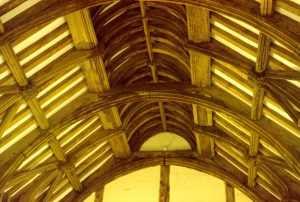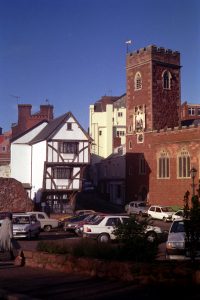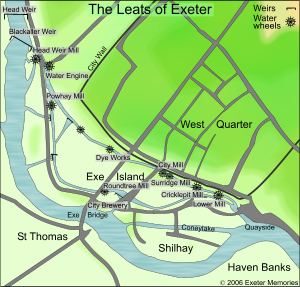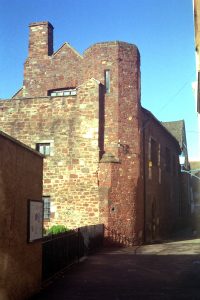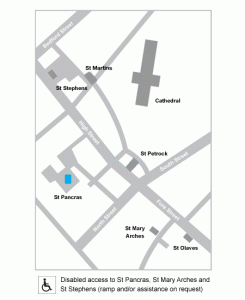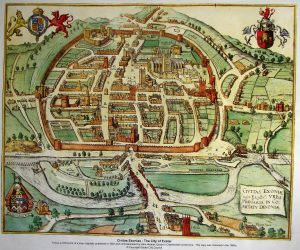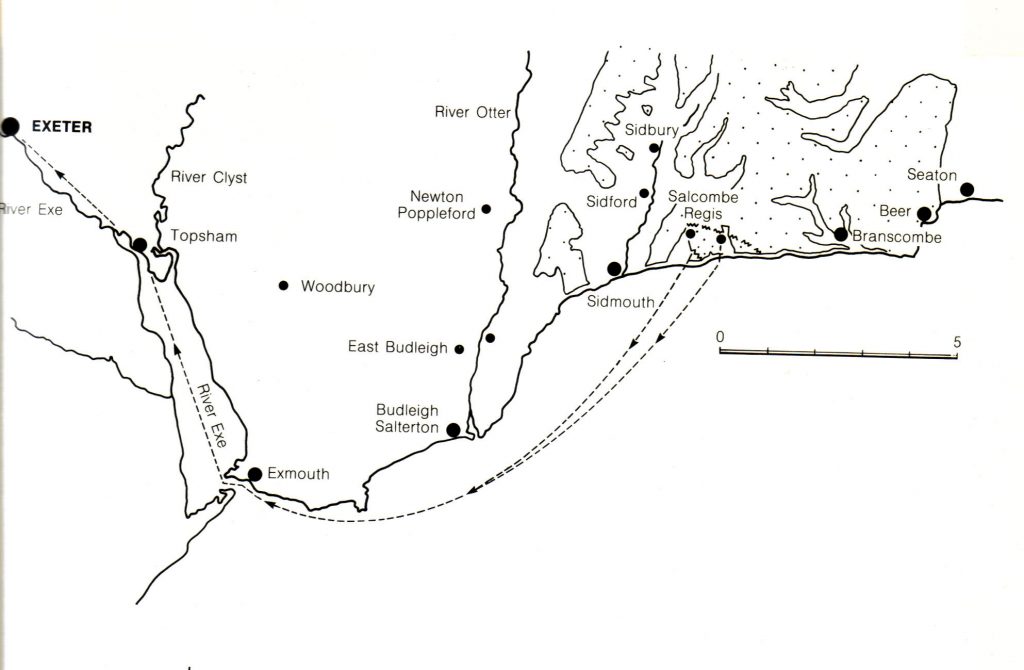 The Devon Coast as shown above, from Beer in the east to Exmouth and downriver from Exeter, is important in Plague of a Green Man, the second book of my West Country Mysteries. A quarry at the village of Beer has been used since Roman times and provided stone for the building of Exeter Cathedral, as did stone from Salcombe Regis further west along the coast. A character in my story, Adam Braund, lived in the Littleham Parish of Exmouth and made his living by transporting stone from these quarries to the Exe Estuary, then upriver to Exeter. In 1380, Exeter Cathedral still needed stone to complete the top register of carvings on the image screen of its west front, only finished in the 15th century.
The Devon Coast as shown above, from Beer in the east to Exmouth and downriver from Exeter, is important in Plague of a Green Man, the second book of my West Country Mysteries. A quarry at the village of Beer has been used since Roman times and provided stone for the building of Exeter Cathedral, as did stone from Salcombe Regis further west along the coast. A character in my story, Adam Braund, lived in the Littleham Parish of Exmouth and made his living by transporting stone from these quarries to the Exe Estuary, then upriver to Exeter. In 1380, Exeter Cathedral still needed stone to complete the top register of carvings on the image screen of its west front, only finished in the 15th century.
There were other uses for the quarry at Beer which also entered my story. A gang of smugglers on this piece of coastline used the Beer quarry to store their loot until they could distribute it. The gang of smugglers was based on the reality of medieval gangs which often served noblemen who enabled and protected them. The aristocrats who ran the smuggling operation in my story lived nearby.
In modern times, the stretch of coastline from Exmouth to Beer is a part of the South West Coastal Path from Minehead in Somerset on the Bristol Channel, along the north Devon coast, around the north and south coasts of Cornwall, along the south coast of Devon facing the English Channel, and on to Poole Harbour in Dorset. The Coastal Path is 630 miles in length and continually rises from sea level where a river or stream flows into the ocean up to headlands atop cliffs only to fall back to sea level again at the mouth of the next river or stream. Hiking all the rises along the Coastal Path adds up to four ascents of Mount Everest.
My husband and I enjoyed hiking the Coastal Path at various points in Somerset, Cornwall, Devon, and Dorset, but we especially liked to walk various parts of it between Exmouth and Beer during the four years we lived in Exeter. We could use public transportation to access stretches between Exmouth and Budleigh Salterton or from Budleigh to Sidmouth. We hiked from Sidmouth to Salcombe Regis and back or from Beer to Branscombe and back. The views are beautiful and unspoiled, inspiring me to use this portion of the coast in my story.
From Exmouth to Beer, the coast line is the western end of the 96-mile-long Jurassic Coast Heritage Site which extends well into the neighbouring shire of Dorset. The Jurassic Coast displays 185 million years of geological history from the Triassic, Jurassic and Cretaceous periods where erosion has exposed rock from each of these different periods.
For more on the Beer quarry caves, click on
https://en.wikipedia.org/wiki/Beer_Quarry_Caves
For more on the South West Coast Path, click on
https://en.wikipedia.org/wiki/South_West_Coast_Path
For more on the Jurassic Coast, click on
https://en.wikipedia.org/wiki/Jurassic_Coast
